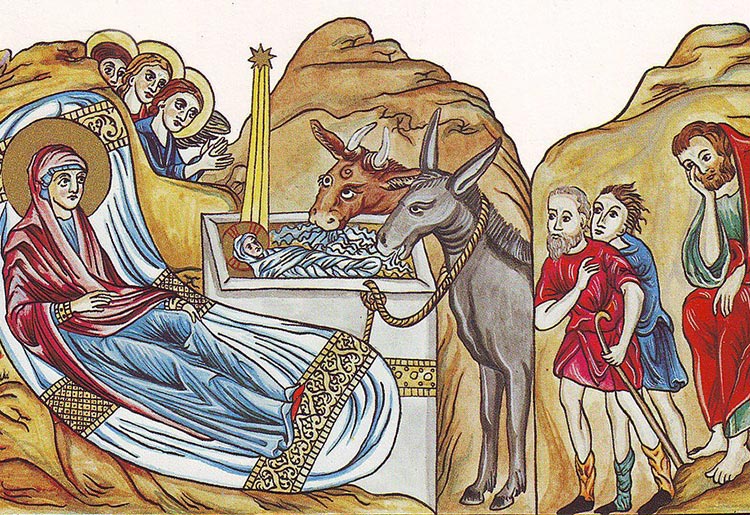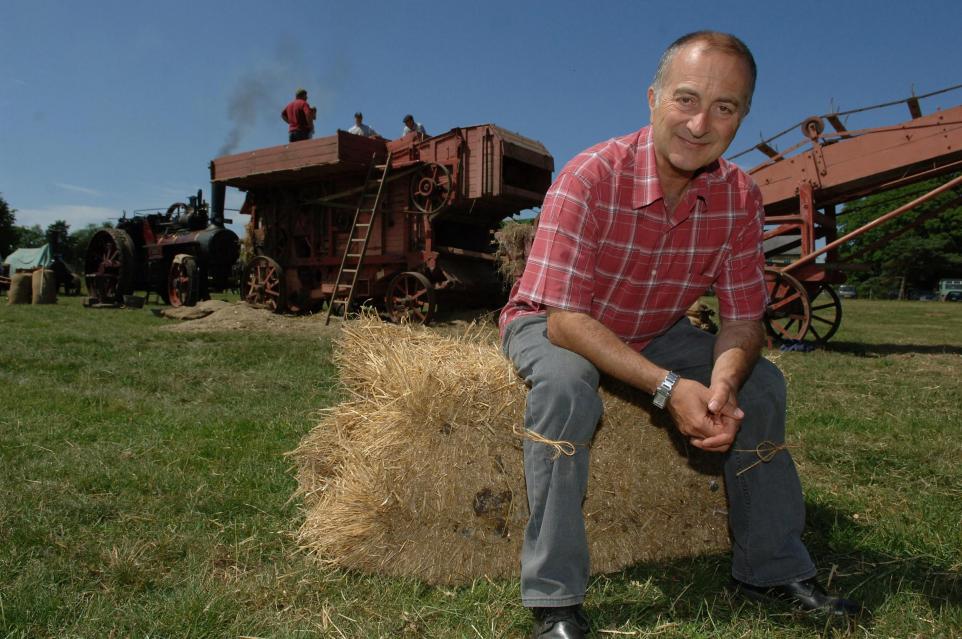
'Nativity of Christ', medieval illustration from the Hortus deliciarum of Herrad of Landsberg (12th century)
Christmas became one of the most important religious festivals in medieval Christendom, second only to Easter. Much of what we associate with Christmas today has its origins in the Middle Ages, including the name. We can also trace the date and some familiar elements like the crib scene to their early roots too.
Why is it called Christmas?
Christmas is a slightly shortened version of Christ’s mass. It appears in various forms through the medieval period, combining Christos from the Greek translation of the Hebrew word, meaning messiah, or anointed, and the Latin Missa, the celebration of the Eucharist. ‘Xmas’ is another further abbreviation of the word, which is often frowned upon and discouraged, and you can find online style guides that will advise you not to use Xmas as it’s too informal, but it does appear in middle English texts. What we recognise as the letter X is in fact the Greek letter chi and it’s used as an abbreviation of the Greek Christos, which begins with the letter chi.
Anglo-Saxons referred to the period as midwinter and sometimes as nativity. Old English contains references to Yule, a word and a celebration that has Viking and Scandinavian heritage, which covered December and January and eventually became associated with Christmas by the late 14th century. The old French word Noel derived from the Latin natalis, meaning birth, was beginning to enter use in English too.
Read the rest of this article...







